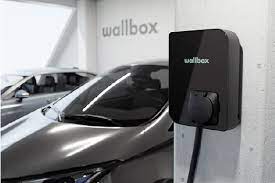In June 2021, Wallbox, the Catalan electric car charging systems company, announced its intention to list on the Nasdaq using an investment vehicle called SPAC. This SPAC provided $270 million to Wallbox for future investment and international expansion, and allowed the company to go public only after a few months, in October 2021.

What is a SPAC?
In recent years, a new investment and financing vehicle has emerged that has captured the attention of the media by allowing technology projects with high growth potential to go public. This is known as SPAC, for Special Purpose Acquisition Company.
A SPAC is a vehicle that is listed on the market without any business activity and with the sole purpose of raising funds for the acquisition of a company and making the operation profitable. The necessary capital is raised through an initial public offering (IPO).
The SPAC is a kind of simplification of the classic Initial Public Offering through which a company goes public on the stock market. In the SPAC, simplification is achieved by eliminating intermediaries and financial agents, shortening the time and cumbersome processing of an IPO.
How does a SPAC work?

The SPAC is created by a team of investors (usually hedge funds or private equity firms), and the management team are the so-called sponsors. The SPAC raises capital and in the meantime scans the market for a private company looking to go public.
Once this target company has been identified, all shareholders must agree to the deal. After the acquisition, shareholders have the option of either redeeming their shares in exchange for their initial investment or exchanging their SPAC shares for shares in the acquired company.
Sponsors have a maximum of two years after the IPO to find a target company. If unsuccessful, the SPAC is liquidated and shareholders receive their initial investment plus interest.
If the SPAC is successful, the sponsors have the opportunity to take a 20% stake in the pre-acquisition SPAC with very little money out of pocket. The promoters’ capital covers the costs of the IPO and the salaries of the team while they search for the company to be acquired and raise the money. On the side of the IPO investors, they usually receive a commitment to buy back their shares and a guaranteed interest on the amount invested as well as free options.
Pros and cons of SPAC
Among the advantages of SPAC are:
- A cheaper, simpler and faster process for businesses
- SPAC investors can redeem their shares if they disapprove of the takeover
- A fixed valuation is agreed between the SPAC and the target company, limiting price volatility.
There are also negative aspects to consider:
- “Blind spots”: when investors buy the SPAC IPO, they do not know which company will be bought and must rely on the sponsors.
- Opportunity cost of being able to have uninvested money within a maximum period of two years
- Difficulties in finding a target company
- Historically lower returns: despite some great success stories, it is generally difficult for SPACs to beat the market. On the other hand, both promoters and shareholders who separate at the time of the merger with the acquired company tend to perform very well.

